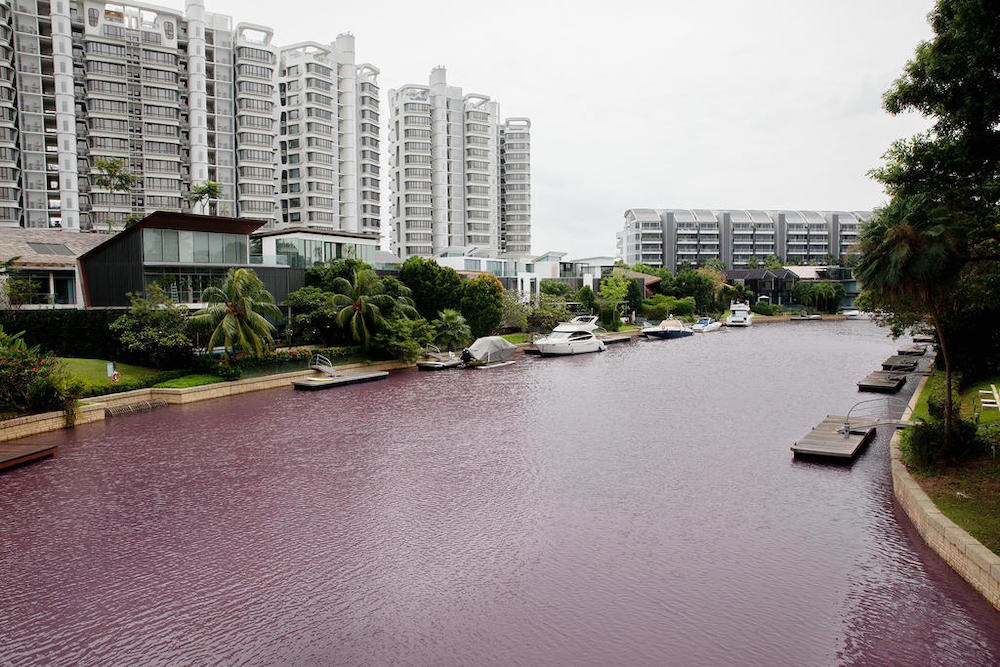SINGAPORE, Jan 15 — The unusual sight of a canal turning pink at Sentosa Cove in recent days, after scores of dead fishes appeared there, was likely caused by algae bloom, marine experts said yesterday.
This is a natural phenomenon where algae grow rapidly out of control, which show up in many different colours such as green, brown, red or pink.
Water samples are still being tested by Sentosa Development Corporation and the authorities, after residents reported dozens of dead fishes and foul smells in a canal of the residential enclave’s South Cove last week.
The area’s management was also alerted and moved to perform a major clean-up of the waterway. But to the residents’ alarm, the waters began turning pink on Wednesday and continued to stay pink yesterday.
Experts told TODAY that the bloom could have been triggered by a sudden environmental change caused by the heavy and persistent rain over recent weeks.
Associate Professor Rebecca Case, a marine phytoplankton expert, said that the rain could have washed excessive amounts of fertiliser or other sediments into the waterway, disrupting the water conditions.
Assoc Prof Case, who is also principal investigator at the Singapore Centre for Environmental Life Sciences Engineering, said that an algae bloom can suffocate fish by depleting oxygen in the water or clogging up their gills. Some forms of algae can also release toxins that kill fish or cause skin irritation to people.
The experts stressed, however, that it is difficult to say conclusively that the fishes died because of the algae bloom and not other causes, without the results of the water quality analyses.
Sandric Leong, senior research fellow at the National University of Singapore’s Tropical Marine Science Institute, believes this particular bloom was caused by a type of microorganism known as pico-cyanobacteria.
Cyanobacteria bloom is a complex phenomenon caused by multiple factors such as light, nutrients and water movements,” Leong told TODAY in an email.
“Due to rainfalls, the light condition was low and cyanobacteria could grow better in low light levels when compared to (other forms of phytoplankton or algae).”
Two monsoon surges had hit Singapore this month, bringing with them torrential rainfall that resulted in landslides and even uprooted a heritage tree at Fort Canning Park.Associate Professor Federico Lauro from Nanyang Technological University’s Asian School of the Environment said that an algae bloom usually lasts for a week or two and clears up by itself after exhausting the nutrients in the water or getting killed by viruses.
Sentosa Cove Resort Management said on Wednesday that it had advised residents to refrain from water sport activities in the waterway, adding that it “will continue to monitor the waters”.
While an algae bloom cannot be stopped, clearing away the decomposing fishes and flushing the canals with fresh seawater would help it clear faster, the experts said.
Although rare in coastal waters, algae blooms have occurred in Singapore before, such as in 2017 when the Singapore River turned green. In 2015, fish farmers were hit by algae bloom and lost up to 600 tonnes of fish.
“Algal blooms happen every spring and summer in the ocean,” Assoc Prof Case said. “Unfortunately, with growing urbanisation and nutrient loading, these blooms are increasing in frequency in coastal waters around the world, including Singapore.” — TODAY






















